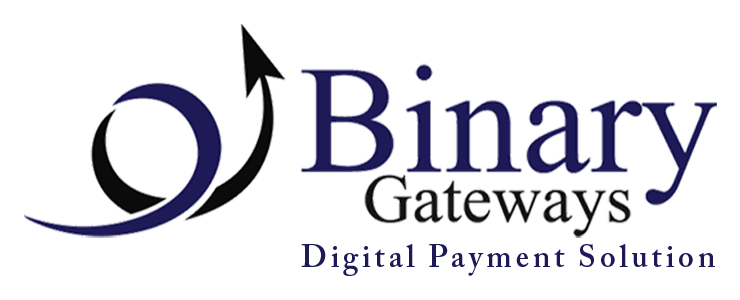How to choose the right business funding option for your high-risk business
How to choose the right business funding option for your high-risk business

Grasping the Concept of High-Risk Businesses
High-risk businesses often operate in environments where market fluctuations, regulatory scrutiny, and the nature of the products or services present significant challenges. Sectors such as gambling, adult entertainment, and cryptocurrency frequently fall into this category due to their unique operational risks. These businesses face additional obstacles like rigorous regulatory requirements and frequent chargebacks, making it difficult for them to access traditional financial services.
The inherent uncertainties in high-risk industries can create barriers to securing conventional funding. Traditional financial institutions are usually cautious about lending to these businesses, given the heightened risk of failure. As a result, understanding the specific risks your business faces is essential for identifying suitable funding solutions.
Business owners must consider the particular demands of their industry and how those demands impact financial stability and growth potential. For example, businesses in highly regulated industries must navigate compliance challenges that can affect their operational costs and overall viability. Additionally, frequent chargebacks can lead to increased financial strain, complicating efforts to maintain a stable cash flow.
Recognizing these factors is crucial for high-risk business owners when exploring funding options. By understanding the unique challenges associated with their industry, they can better assess which non-traditional funding sources may be appropriate. Whether it’s venture capital, angel investors, crowdfunding, or online lenders, each option comes with its own set of advantages and considerations tailored to meet the needs of high-risk enterprises. This tailored approach enables businesses to align their funding strategies with their specific operational and growth objectives.
Some Related Blogs
- How to comply with PCI DSS regulations
- The Benefits of Using a Payment Processor That Specializes in High-Risk Businesses
- How to Integrate a Payment Gateway Into Your Website or App
- How to Get Approved for a High-Risk Merchant Account
Conventional vs. Non-Traditional Financing
Traditional bank loans can be challenging for high-risk businesses to obtain due to stringent requirements such as strong credit history, significant collateral, and a track record of profitability. As these businesses often cannot meet such criteria, alternative funding options become necessary.
Venture capital and angel investors present one non-traditional route. These investors provide funds in exchange for equity in the business, making them a suitable choice forHigh-risk businesses with significant growth potential. Although giving up equity can mean less control, the influx of capital and expertise can be invaluable.
Crowdfunding is another viable option. Platforms like Kickstarter and Indiegogo allow businesses to raise small amounts of money from a large number of backers. This method can be particularly effective for businesses with innovative products that capture public interest. However, a strong promotional strategy is essential to succeed in crowdfunding campaigns.
Online lenders offer a more accessible route to obtaining capital. These lenders typically have quicker approval processes and more flexible terms compared to traditional banks. However, the trade-off is often higher interest rates, which can increase the overall cost of borrowing.
Each of these non-traditional funding methods offers unique advantages and considerations, allowing high-risk businesses to select an option that aligns with their specific needs and growth plans. By exploring these alternatives, businesses can find tailored solutions that traditional financial institutions may not provide.
Evaluating Your Business Requirements
To choose the best funding option, you first need to understand the financial needs of your business. Start by pinpointing the exact amount of capital you require, factoring in operational costs, marketing expenses, product development, and other essential expenditures. Knowing the precise funding amount will help you narrow down suitable options.
Next, reflect on how the funds will be utilized to foster business growth. Are you planning to launch new products, explore new markets, or increase production capabilities? Clearly defined goals will help you select a funding option that aligns with your strategic objectives.
It’s also important to assess the timing of your funding needs. Do you require immediate capital to address urgent issues, or are you looking for long-term investments to support gradual growth? This distinction will guide you in choosing between short-term and long-term funding solutions.
Furthermore, evaluate your business’s financial health and creditworthiness. High-risk businesses may struggle with traditional loans due to stringent credit and collateral requirements. Understanding your financial standing can help you explore alternative funding sources that are more accessible.
Lastly, consider the implications of each funding option on your business operations and ownership. Equity financing, for example, might provide substantial capital but may require you to give up some control. On the other hand, loans and online lending options may impose higher interest rates, impacting your profitability.
By thoroughly evaluating your business requirements, you can make informed decisions about the most appropriate funding sources, ensuring that the capital you secure aligns with your growth plans and operational needs.
Contrasting Funding Choices
High-risk businesses must weigh the pros and cons of various funding options to determine the best fit. Short-term funding options, such as lines of credit or merchant cash advances, offer immediate capital to address urgent needs but often come with higher interest rates. These options are ideal for businesses that expect quick returns or have temporary cash flow issues.
In contrast, long-term funding solutions like term loans or equity financing support substantial investments in growth or expansion. These options generally offer lower interest rates and longer repayment periods but may require giving up some control or ownership of your business. For example, equity financing through venture capital or angel investors can inject significant funds into your business but may come at the cost of equity and control.
Online lenders provide a more accessible route to obtaining capital, often with quicker approval processes and more flexible terms compared to traditional banks. However, the trade-off is typically higher interest rates, which can increase the overall cost of borrowing. Despite this, online lending can be a viable option for high-risk businesses that struggle to secure traditional loans.
Crowdfunding offers another alternative, allowing businesses to raise funds from a large number of backers. This method can be particularly effective for businesses with innovative products that capture public interest. However, a strong promotional strategy is essential to succeed in crowdfunding campaigns.
In summary, each funding option presents unique advantages and considerations. High-risk businesses need to analyze their specific financial needs, growth plans, and willingness to give up control to choose the most suitable funding option. By carefully evaluating these factors, businesses can align their funding strategies with their operational and growth objectives, ensuring they secure the capital needed for success.
![]()
Email us anytime!
Email customer service 24/7 at info@binarygateways.com
![]()
Call us anytime!
Reach customer care 24/7 at (801) 761-5001
